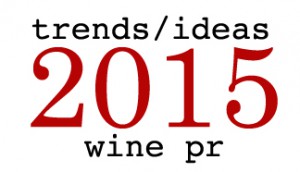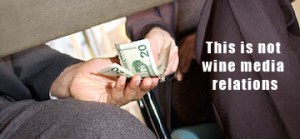The New Year is now well and truly launched. No more introducing emails with ‘happy holidays’ or ‘happy 2015.’ Time to buckle down. Still restless?
This is a good time to take that energy you stored up over a few days off over the holiday and turn to looking at everything you do. Try to have fresh eyes.

President Obama with the YouTube personalities who interviewed him after the State of the Union speech
To get you started:
Use those ‘new’ eyes and re-read all of your materials. Are they really as well-written as they could be? Are they intriguing? Are they insightful? Are they compelling? Maybe you should take another stab at them…or maybe enlist someone else to assist.
How about your graphics and photos? Maybe it’s time to commit to a new round of photography—whether of people or vineyards or winery. Fresh photos, new images, seasonally appropriate: there may be news lurking somewhere in there.
Do you have a list of media at hand whom you’re targeting this year? Do you have distinct differentiated pitches ready for each of them or were you going to use your ‘same-old’ approach? Are they the ‘usual suspects’ or are there some new names there?
Are you making time to read the many trend reports flooding our inboxes? What about the latest DTC report http://www.shipcompliant.com/resources/events ? Are you keeping a list of what your winery could be doing differently or is doing differently? Ideas to discuss with your management colleagues? Why aren’t we using concrete eggs, for example? Are we doing trials with any unusual varietals, and so on.
New voices, new channels: are you going to try to find a new voice or platform this year to reach out to? I was interested to see what three Youtube personalities the White House included in post-State of the Union discussions (hyper link to http://www.whitehouse.gov/blog/2015/01/22/happening-today-youtube-creators-interview-president-obama-live-white-house). How or why did they choose Hank Green, Bethany Mota and GloZell Green? Who’s out there talking about wine whom you could approach?
Maybe it’s time to freshen up your winery’s elevator speech, that unique selling proposition boiled down to just a sentence or two.
Maybe the most important thing to try to think freshly about right now, at the beginning of a new year: what do you want to accomplish in the next twelve months? Is it getting media to take a fresh look at your winery? Is it getting key media to profile you, writers who’ve never talked about you before?
Here’s an insightful post by Seth Godin to spur this type of January contemplations: http://sethgodin.typepad.com/seths_blog/2015/01/question-checklist-for-reviewing-your-new-marketing-materials.html



